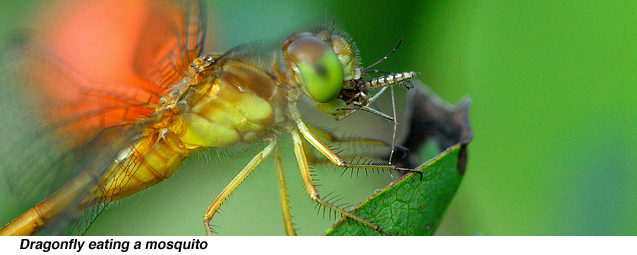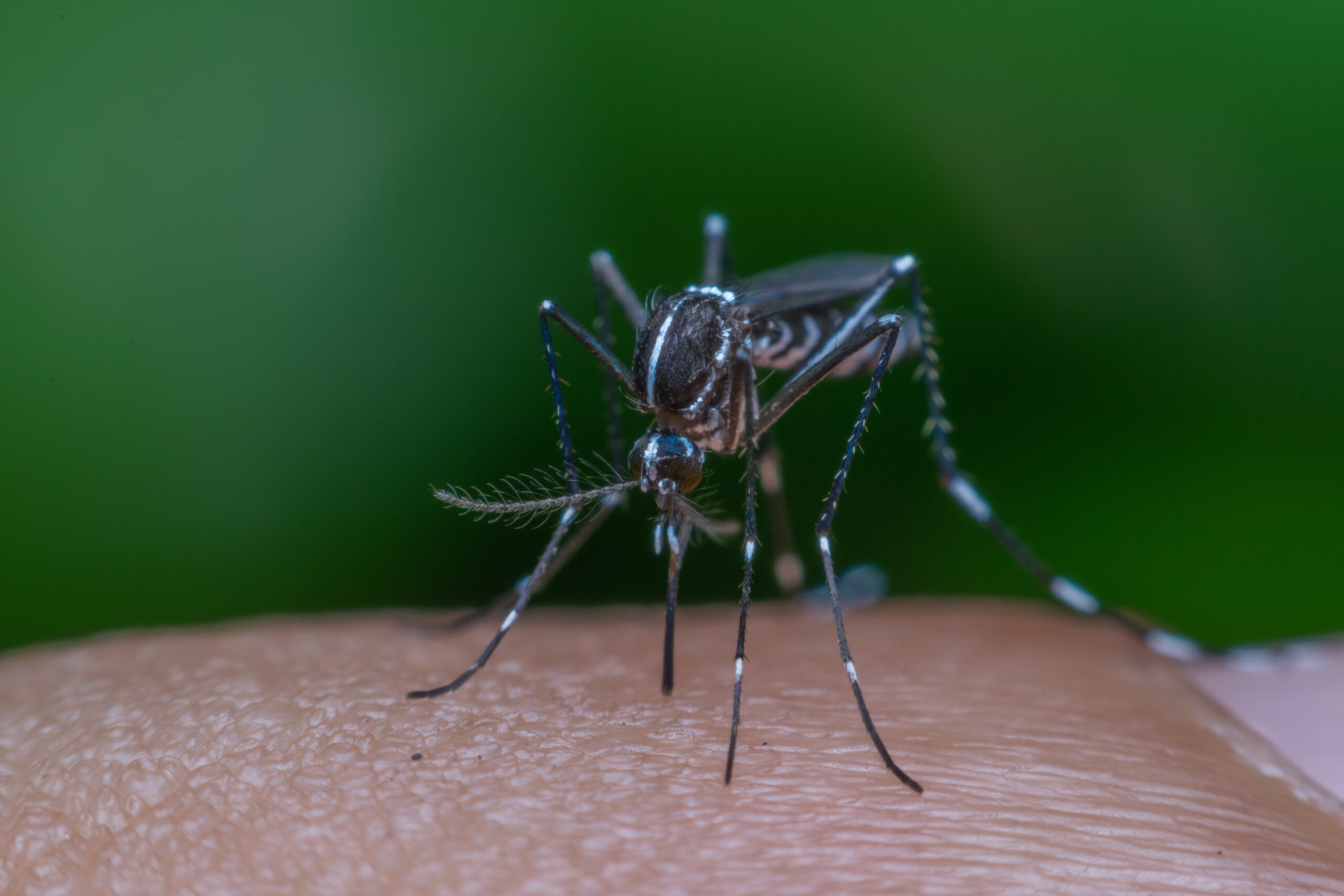Albuquerque Journal – August 15, 2016
Tucumcari-based inventor Robert Hockaday has created a new, wearable mosquito-repelling device that could take the bite out of today’s growing Zika virus.
Hockaday, a physicist, mechanical engineer and all-round inventor, created his new BugBling to help combat mosquito-borne diseases by never getting bit in the first place. The patented device, which uses a combination of chemical and botanical repellents, can be worn as a wrist or ankle band, or can be clipped onto clothes, providing up to 800 hours of continuous protection against mosquitoes.
Robert Hockaday in Tucumcari with BugBling repellent wrist band he invented. (Courtesy of NMSU)
Robert Hockaday in Tucumcari with the BugBling repellent wrist band he invented. (Courtesy of NMSU)
New Mexico State University’s Molecular Vector Physiology Lab conducted two sets of tests on the device in 2014 and 2015. NMSU found the BugBling performed much better than some of the best-selling wearable mosquito repellents currently on the market, including today’s top-selling products Invisiband and OFF ClipOn.
“The tests showed the BugBling is up to three times more effective than those two products,” Hockaday said. “The tests measured the reduction of attractiveness to mosquitoes and found the BugBling reduced that to about 10 percent. The others performed at between 30 percent and 50 percent.”
Hockaday applied in May for Environmental Protection Agency approval to sell the device in the U.S., a process that could take about nine months. In the meantime, he’s working with businesses in other countries to begin selling in markets with fewer regulatory hurdles, such as South Korea and especially Brazil, where the Zika virus is particularly widespread.
The EPA’s regulatory review is largely a procedural requirement to begin sales because the BugBling uses repellents that are already sold on the market today.
It’s the particular mix of chemical and botanical repellents – plus the way those ingredients are packaged for steady emission through a wearable membrane, or filter – that constitute Hockaday’s secret sauce.
The BugBling uses a combination of DEET – the most common mosquito repellent in the U.S. since World War II – and Lemon Eucalyptus plant oil. The two together provide a lot more repellent bang for the buck than if used individually, Hockaday said.
The real innovation, however, is the membrane where the repellents are contained, which steadily releases scents from the mixture to surround the user with an armor of odor against mosquitoes. Like all mosquito repellents, the odor interferes with a mosquito’s keen sense of smell.
“The membrane provides a precise delivery rate of the chemical, or scent, which confuses mosquitoes and they stop hunting,” Hockaday said.
Unlike repellent sprays or creams, there is no contact with the skin, allowing consumers to avoid the discomfort or concern about rubbing sticky chemicals on their body. In addition, with topical repellents, the effect can wear off fairly rapidly, whereas the BugBling provides continuous protection for more than a month, Hockaday said.
NMSU tested the BugBling for Hockaday through the New Mexico Small Business Assistance program, a state-funded initiative that provides technical support for local businesses at NMSU, the University of New Mexico and the state’s two national labs. The Hansen Vector Physiology Lab used a wind tunnel to standardize airflow, with caged mosquitoes located near a person wearing repellent. The lab then measured and compared mosquito reactions using Hockaday’s product and commercially available repellents.
“The BugBling band strongly repels mosquitoes and proved to be superior compared to the other devices we tested,” said Immo Hansen, the biology professor who conducted the tests, in a prepared statement. “In fact, it was the only device that had a significant effect in our tests.”
The tests used Aedes aegypti mosquitoes, one of two known Zika carriers. But, apart from Zika, the repellent is intended as general protection against mosquitoes to help lower the incidence of diseases caused by bites, such as malaria, or dengue or yellow fever.
Hockaday is distributing free BugBling prototypes at events for feedback from users while he pursues EPA approval for commercial sales. The device is now available in wearable bands and clips-ons. As it begins to enter the market, Hockaday will create more products, such as repellent ornaments, floor mats, and wearables for pets and livestock.
Some members of the U.S. Olympic golf team are now using the BugBling in Brazil.
NMSU’s Arrowhead Center Inc., which assists startup businesses in commercializing new technologies, is providing technical support to help develop Hockaday’s business strategy, and connect with potential investors and partners.
“We’re always open to new ideas to solve issues in more effective ways,” said Arrowhead program manager Griselda Martínez Cereceres. “Robert has an innovative product that testing has shown to be superior than others on the market. We want to help him as he pushes forward.”
Hockaday is a former Los Alamos National Laboratory employee who formed his own company in 1996, Energy Related Devices. He’s been working on developing new, miniature fuel cells and solar cells since then.
But, in 2007, a customer hired him as a consultant to create tools to lure and trap mosquitoes, which got his innovative wheels turning in the opposite direction – to create a new, more effective repellent. He’s now spinning out BugBling into a new company, Zing Devices Inc.
He recently acquired an old ethanol factory in Tucumcari, where he’ll mix BugBling repellents and assemble the wearable devices.
Hockaday presented his product at Technology Venture Corp.’s Deal Stream Summit last year. He’s now seeking funds for the march to market.



